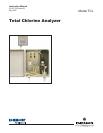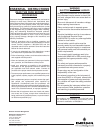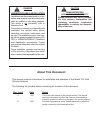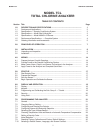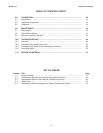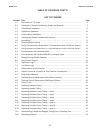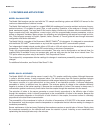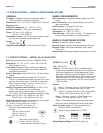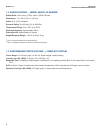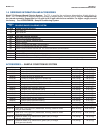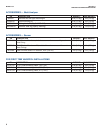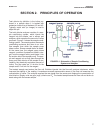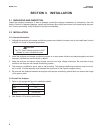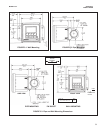
2
MODEL TCL SECTION 1
DESCRIPTION AND SPECIFICATIONS
1.1 FEATURES AND APPLICATIONS
MODEL 54eA ANALYZER
The Model 54eA analyzer can be used with the TCL sample conditioning system and 499ACL-02 sensor for the
continuous determination of chlorine in water.
The Model 54eA analyzer is housed in a rugged NEMA 4X weatherproof, corrosion resistant enclosure of epoxy-
painted aluminum. It is suitable for panel, pipe, or wall mounting. Operation of the analyzer is through a front
panel membrane keypad. The large back-lit dot matrix display continuously indicates chlorine concentration in
large numerals along with temperature, current output, and two programmable process parameters, such as
alarms or diagnostic variables. Menu screens for calibrating and programming the analyzer are simple and intu-
itive. Plain language prompts in English, Spanish, Italian, German, or French guide the user through instrument
configuration and sensor calibration
The Model 54eA is a member of the Rosemount SMART FAMILY
®
of instruments. It is designed to communicate
with the Model 375 HART
®
communicator or any host that supports the HART communication protocol.
Two independent isolated outputs provide either a 0-20 mA or 4-20 mA output and can be assigned to chlorine or
temperature. The controller option allows PID control acting on chlorine or temperature.
Three, fully programmable process alarms are standard. One relay can be configured as an interval timer. An
overfeed timer is available for any one process relay, and one relay can also be used as an interval timer. The
TPC option allows any alarm relay to be used for Time Proportional Control.
The analyzer fully compensates chlorine readings for changes in membrane permeability caused by temperature
changes.
For additional information, see Product Data Sheet 71-54e.
MODEL 499A CL-02 SENSOR
The Model 499ACL-02 total chlorine sensor is used in the TCL sample conditioning system. Although the sensor
is called a chlorine sensor, it really measures iodine. The iodine comes from the reaction between halogen
oxidants in the sample and the acetic acid/potassium iodide reagent added by the sample conditioning system.
The sensor consists of a gold cathode and a silver anode in an electrolyte solution. A silicone membrane,
permeable to iodine, is stretched over the cathode. The analyzer applies a voltage to the cathode sufficiently
negative to reduce all the iodine reaching it. Because the concentration of iodine in the sensor is always zero, a
concentration gradient continuously forces iodine from the sample through the membrane into the sensor.
The reduction of iodine in the sensor generates a current directly proportional to the diffusion rate of iodine
through the membrane, which is directly proportional to the concentration of iodine in the sample. Because the
iodine concentration depends on the amount of total chlorine in the sample, the sensor current is ultimately
proportional to the total chlorine concentration.
The permeability of the membrane to iodine is a function of temperature. A Pt100 RTD in the sensor measures
the temperature, and the analyzer uses the temperature to compensate the total chlorine reading for changes in
membrane permeability.
Sensor maintenance is fast and easy. Replacing the membrane requires no special tools or fixtures. Simply place
the membrane assembly on the cathode and screw the retainer in place. Installing a new membrane and
replenishing the electrolyte takes only a few minutes.



